I live in Fort Myers Beach, a small town on Estero Island on the southwest coast of Florida. Estero is a barrier island with a long, shallow-sloping white sand beach facing the Gulf of Mexico on one side and the protected waters of Estero Bay on the other. My wife Courtney and I have a house within a few hundred yards of the beach, and after a major surgery I spent a good deal of time walking there to recuperate. I got to thinking about owning a small boat that I could hand-trolley from home and launch at the beach. Rowing would be good recreation too—like most men my age with a desk job, I need exercise.
I wanted a small rowing boat light enough for me to manage by myself, large enough for the two of us, and wooden—something beautiful and interesting. Courtney, a master of online shopping, found the website for Cottrell Boatbuilding in Searsport, Maine, and there it was, the Chaisson dory.
The Chaisson dory was designed as a tender and originally built in the early 1900s by George L. Chaisson of Swampscott, Massachusetts. It is quite sturdy and has a high load capacity. The 10′ dory has a rounded lapstrake hull with a small flat area on the bottom that’s perfect for beaching. Chaisson made no provisions for sailing; the boat is strictly for rowing.
A little research and a few phone calls to Lynn and Dale Cottrell confirmed that their version of the Chaisson dory met all of my criteria. I placed the order, and six months later the finished boat was shipped to a marina a few blocks from our house.
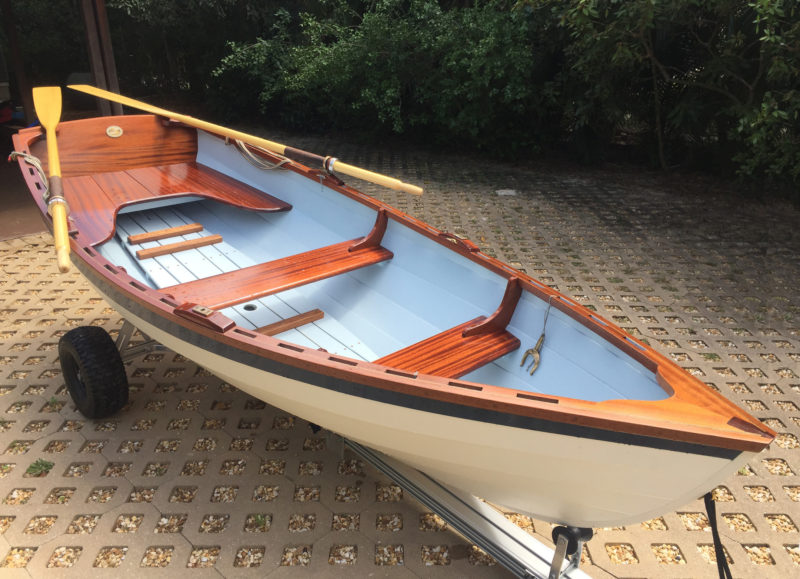 Doug Eckmann
Doug EckmannTo keep this boat light for walking it to the beach, the floorboards were made of cedar. Cross cleats for heel bracing were added after a few launches through breaking waves.
As I unpacked the boat from its shipping crate, I told myself not to be disappointed if the quality of work was not perfect, but there was nothing to worry about. The boat was not just perfect; it was a work of art. The workmanship is flawless, including the beautifully painted hull with a navy-blue accented sheerstrake and eight coats of varnish on the mahogany seating, trim, and transom, which bore the name ELIZABETH II. A friend had told me: “Whatever you name the boat, make it a ‘II’ so people will think it’s the tender to your yacht.” As sort of a joke I’d sent an email to Lynn asking if I could have a name painted on the transom, something like Elizabeth II (Courtney’s middle name is Elizabeth). The next day I received an email with a picture of the name painted on the transom.
 John Walther
John WaltherWith two aboard, the Chaisson dory is in good trim and has plenty of freeboard. The span between the locks at the forward rowing station is less than that at the amidships station and calls for a second shorter pair of oars.
The Cottrells’ Chaisson dory has a length of 10′2″ and a beam of 4′2″. It has three seating positions: spacious mahogany sternsheets, and thwarts at the center and the bow. Both thwarts are accompanied by oarlocks. The forward rowing position allows better balance when carrying a passenger on the sternsheets. The boat came with one pair of Shaw and Tenney oars the ideal length for the center station. I ordered a second set of oars 6″ shorter to use in the narrower forward rowing position.
The boat has glued lapstrake plywood construction with laminated Douglas-fir stems and a gorgeous mahogany transom. The sturdy thwarts and gunwales are also mahogany. The woodwork is also available in teak or white oak. Dale offers floorboards in mahogany, teak, or oak, but made mine of cedar to keep the boat light. The hull is without frames but stiffened by the thwarts and the sturdy open gunwale. The boat weighs about 90 lbs. I find this is manageable; it’s easy for me to walk it to and from the beach with a lightweight adjustable aluminum launching dolly. The boat’s fastenings and hardware are silicon bronze. We requested bronze handles on the transom to aid handling and beach launching.
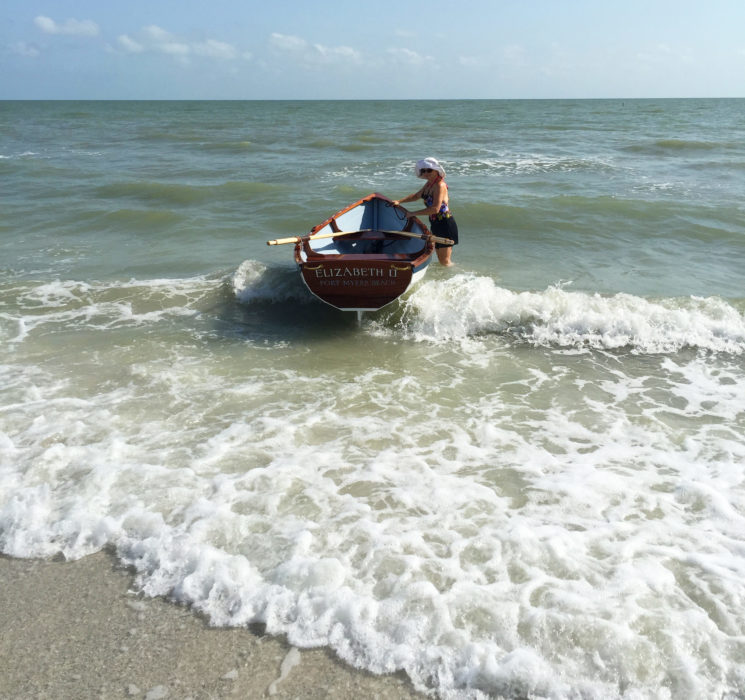 Doug Eckmann
Doug EckmannThe waters on the Gulf coast are not always calm, but the dory can easily manage a bit of surf. Here Courtney holds the boat, waiting for Doug.
On the maiden voyage I started learning some of the extra details that would make the boat easier to handle in the medium surf we often have on Fort Myers Beach. First, I added teak cleats on the floorboards to brace my heels for rowing. When I launched into the waves, the bow would rise to meet the wave crests and I tended to slide off the seat unless I had a way to brace my feet. Second, waves slapping the oars tend to lift them out of the oarlocks, so I replaced the horn oarlocks with round closed oarlocks. Even these tended to jump out of the rowlocks, so I screwed small bronze cleats to the pad support blocks to secure the line tied to the oarlock shaft. The cleats make it easy to secure and to dismount the oars quickly. Launching in the surf, I have to get underway quickly to avoid being broached and rolled by incoming waves. Finally, I found machined aluminum split-shaft collars that I installed to back up the leather oar collars, which were not quite sturdy enough for the surf.
After I had ironed out a few details and mastered my launching technique, rowing off of the beach was really fun. With a mostly rounded bottom, the dory is a bit tender, so getting in and out takes a bit of care, as with a canoe. With the crew seated and weight centered, the boat feels very stable underway, even in moderate waves; I don’t think it would easily capsize. It rides waves like a cork. When I head in, I can catch a wave, surf right up on the beach, and land upright on the flat part of the bottom. The large transom can take on a following sea or breaking surf with little danger of swamping, although I must maintain course by alternately dragging oars to keep the bow pointed straight down the wave face. A small skeg aids tracking/keeping the boat on course.
We don’t use the dory as a tender, so I ordered the boat without the standard canvas rubrails, and had the mahogany gunwales finished bright. I can’t say from experience how it would behave under tow, but with its tucked-up stern, cutaway forefoot, and a bow eye set low, it appears that the dory would tow well.
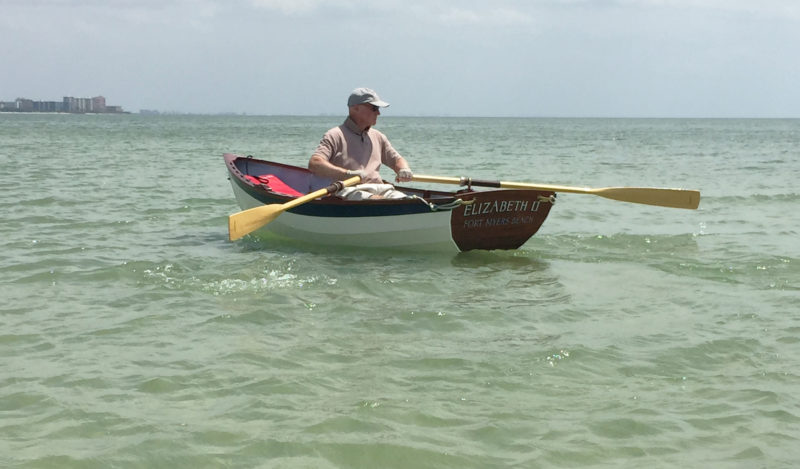 Courtney Eckmann
Courtney EckmannJohn Gardner writes of the Chaisson dory tenders: “In spite of their narrow, flat bottoms, which, incidentally are great for landing on the beach, they are essentially round-hull boats and behave as such, being in their performance on a par with classic yacht tenders by Lawley and Herreshoff, although they are only half as difficult to build.”
The dory is very maneuverable and turns quickly and easily. I estimate solo rowing speed to be about 4 knots with moderate exertion. The boat is light, so it doesn’t carry a lot of momentum between stokes. In calm water, I make about 2 knots with Courtney and our two small dogs on board. I have not had three people on board, but my impression is that it would be a bit overloaded except for short distances in smooth water. With my “crew” aboard, rowing is about as strenuous as walking briskly. I am pleased that rowing turned out to be the good exercise I’d hoped for. After an outing of several hours I can report that rowing pretty much exercises every muscle I could feel—calves, thighs, seat, stomach, chest, shoulders, arms, and especially legs—but without discomfort or lower-back issues.
In shallow Estero Bay on the backshore of Estero Island, this little dory has allowed us to see seabirds roosting on small mangrove islands and bottlenose dolphins. Once we came upon a gathering of West Indian manatees and were charged by a bull manatee Moby-Dick style. He dove under the boat, his massive back just inches below the boat. On another occasion I rowed right into a school of thousands of mullet, leaping in all directions as larger predator fish swooped into the school to attack them. Our Chaisson dory is less intrusive than larger boats, and we get to see things up close. The boat’s small size, easy launching, ready availability, and low maintenance invite using it at the drop of the hat, so we get out on the water frequently. My friends with powerboats don’t seem to get out that often.
The custom-built Chaisson dory was expensive for a 10′ rowing boat, but not pricey for a masterpiece of woodworking that has impressed everyone who has seen it on the beach.![]()
Doug Eckmann grew up in Racine and learned to sail on Wisconsin lakes. He joined a university sailing team in 1969 and later did more sailing on Texas lakes when he moved to Austin. He is a civil-environmental engineer in Fort Myers, Florida.
Particulars
[table]
LOA/10′ 2″
Beam/4′ 2″
Weight/85 lbs
[/table]
Cottrell Boatbuilding offers the Chaisson dory for $5,450 to $6,475 depending on woods used. Floorboards are optional. Lines and offsets for the boat are published in The Dory Book by John Gardner.
If you have an interesting story to tell about your adventures with a small wooden boat, please email us a brief outline and a few photos.

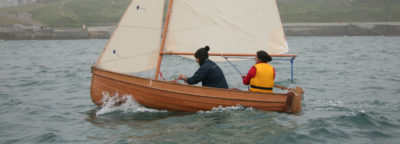
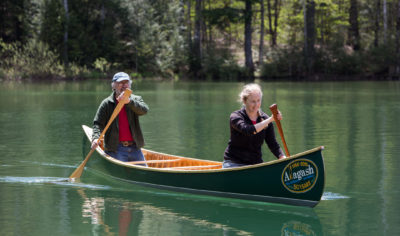
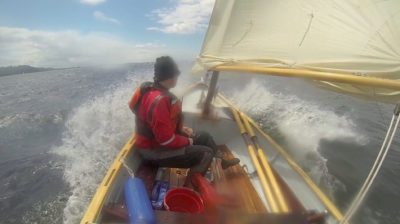
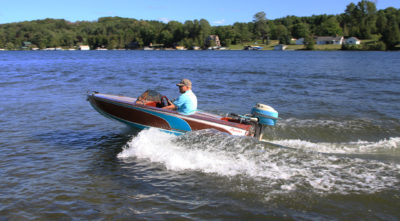
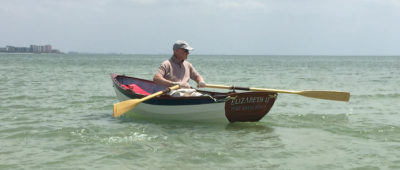
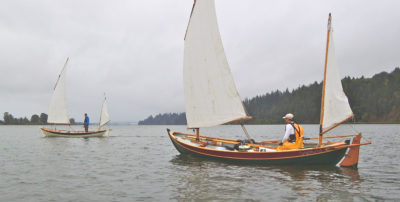
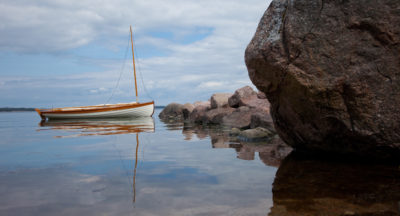
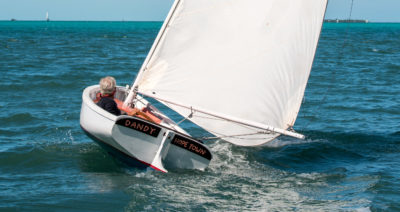
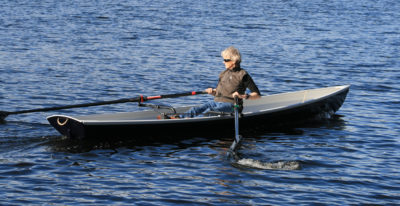
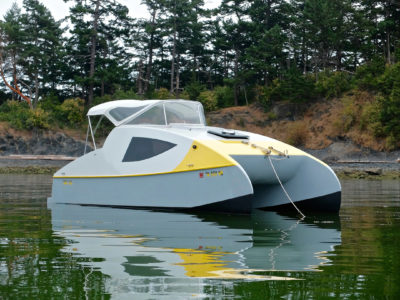
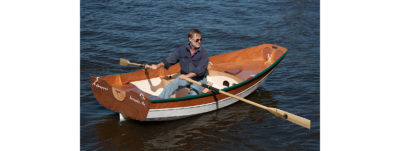
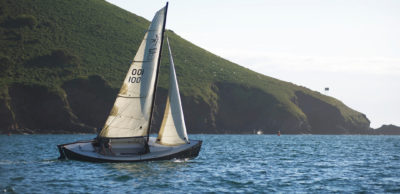
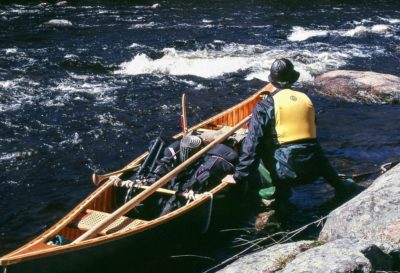
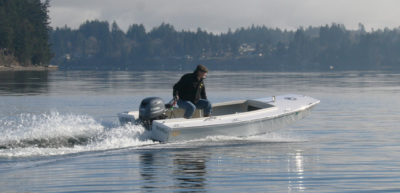
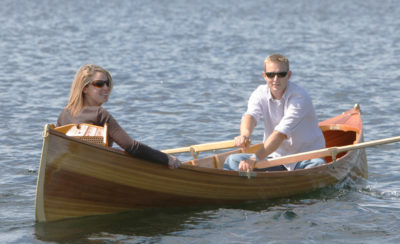
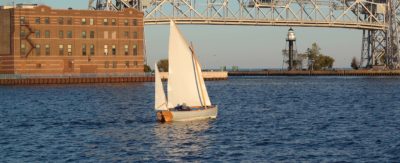
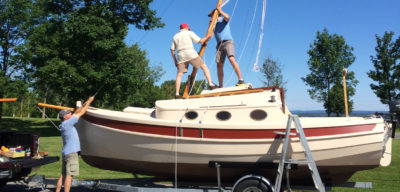
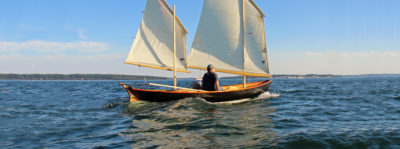
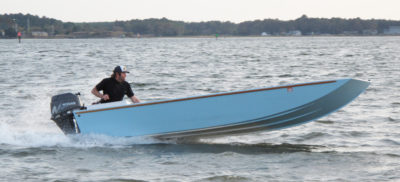
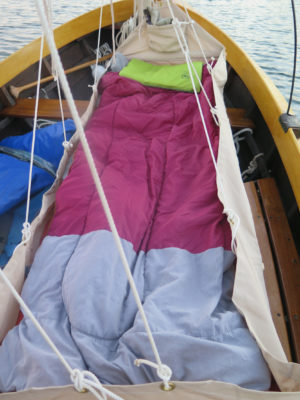
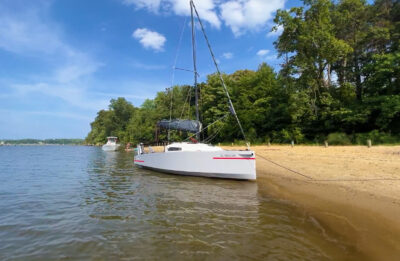
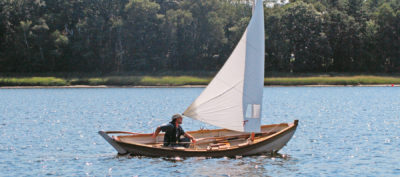
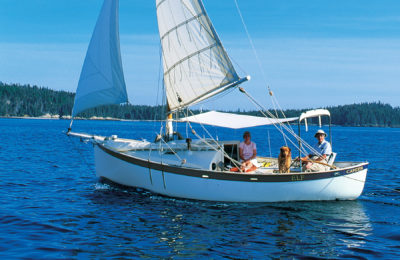
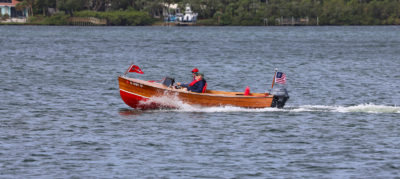
Gorgeous boat, worth more than it cost in terms of good health. Life jackets??
I have one of these dory tenders which was built traditionally at Mystic Seaport back in the 80s. I used it as a tender for my catboat and it worked very well. I carried 3 with no problem. I found it easier to row from the bow and have the passengers amidships and in the stern. You want a calm day for four. As it is a traditional build, the cleats and frames work fine as stretchers. The boat towed very nicely. I use one set of oars, sized for amidships; with long leathers and overlapping hands I have no problem rowing from the bow. I don’t have the catboat any more but still have the tender.
Here in southern New Jersey—south of Atlantic City—the lifeguards use boats based on the Seabright skiff. While they are different from your dory, they do look similar enough that how they get in through the surf may be of use to you. Rather than using oars to steer or trim, they move to the stern and use their weight to keep the bow up, drag the skeg, and by shifting their body, they can steer and trim depending on what the surf is doing. In decades of watching them use this technique, I have yet to witness one get swamped, broached, or even fail to land in the space near the lifeguard tower.